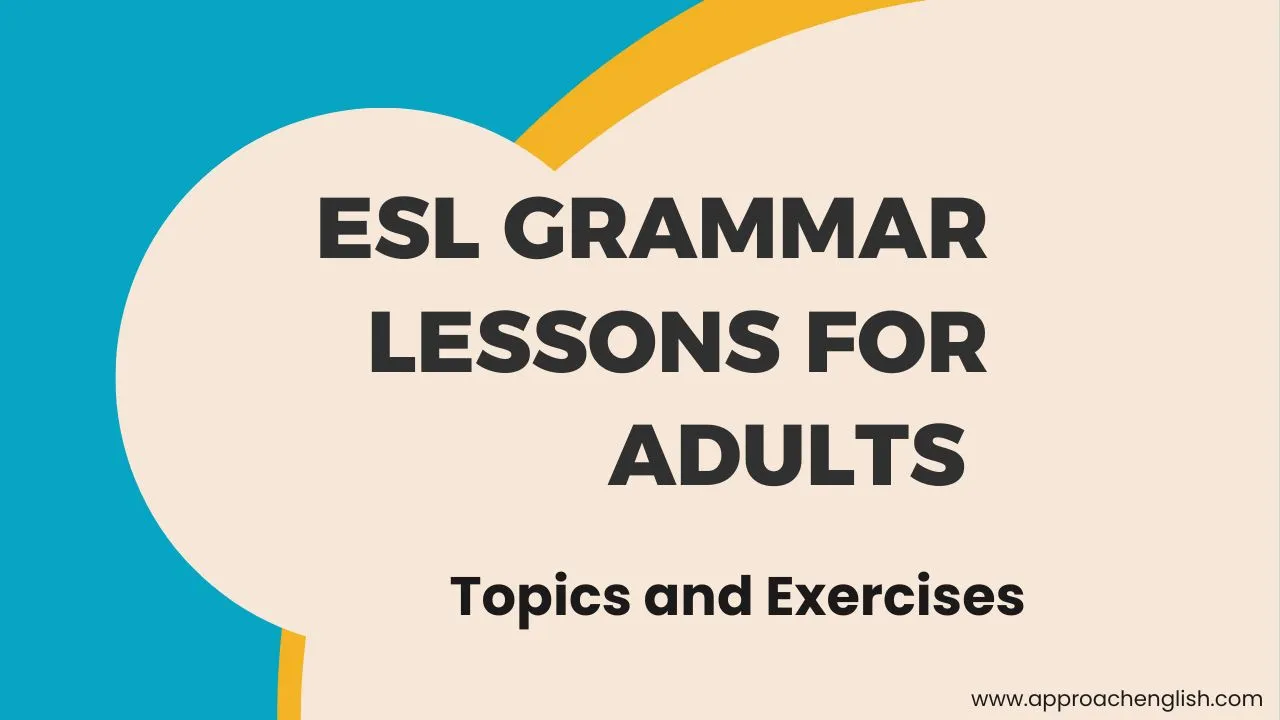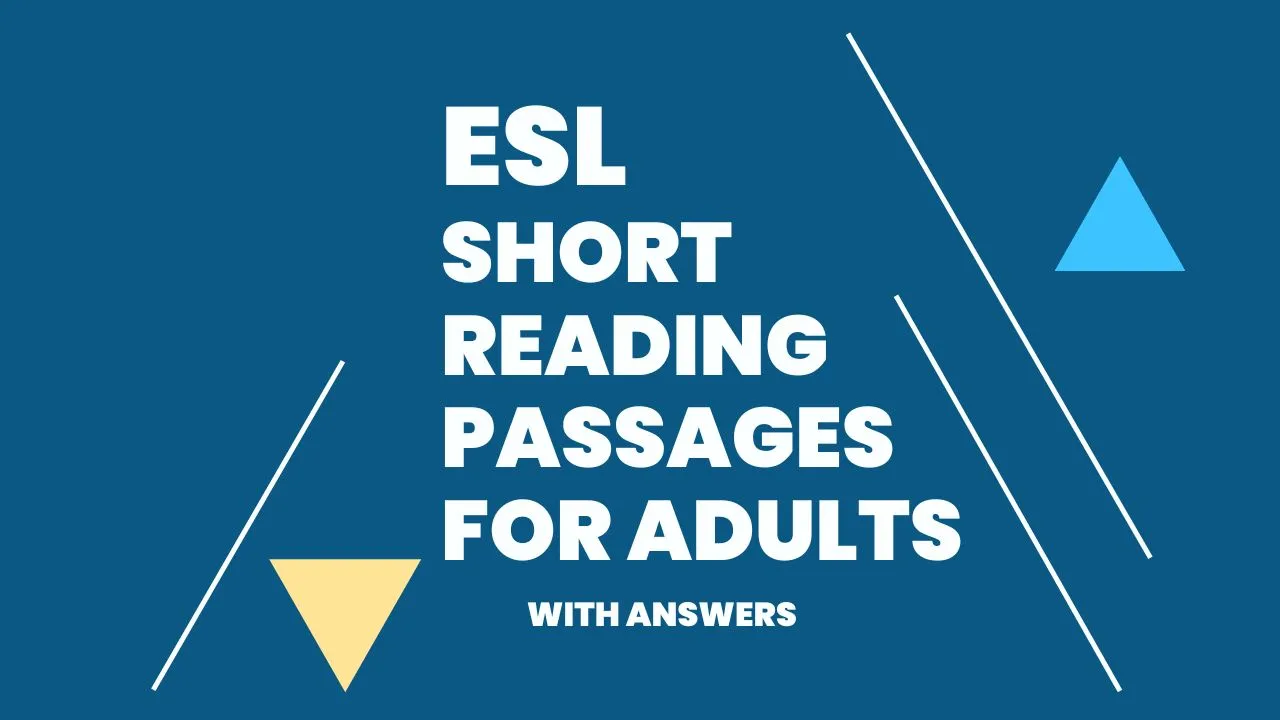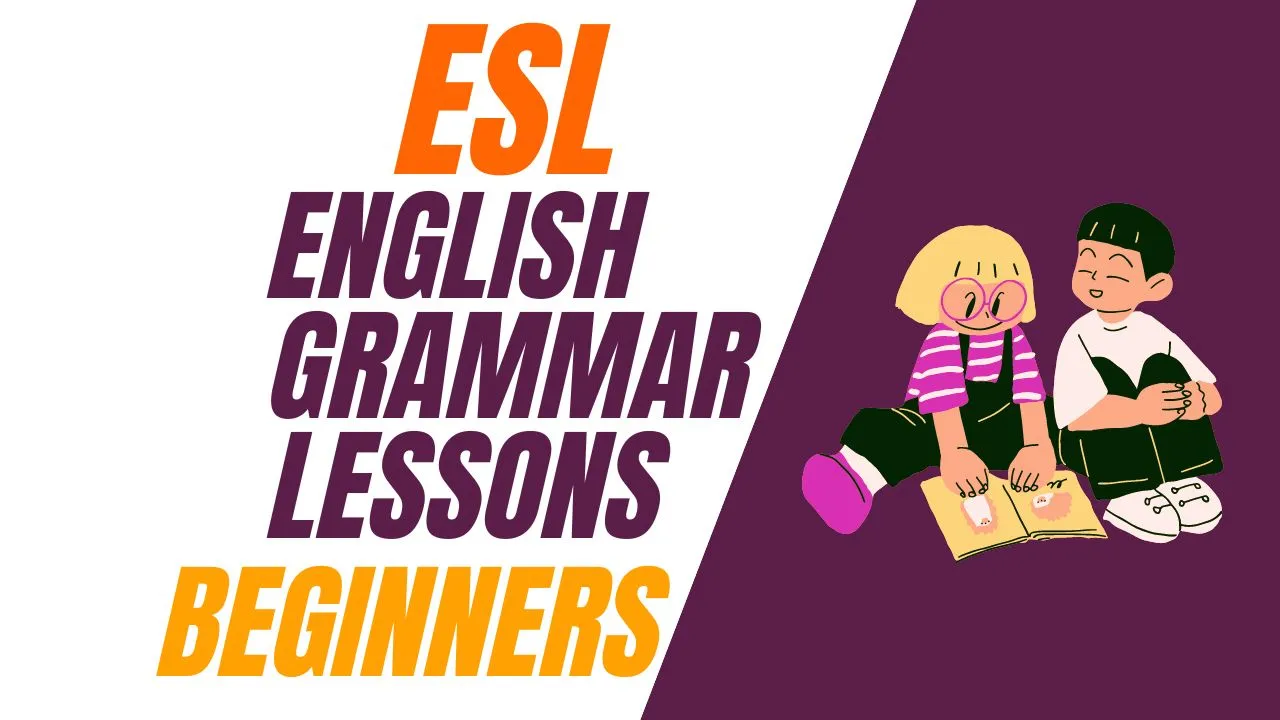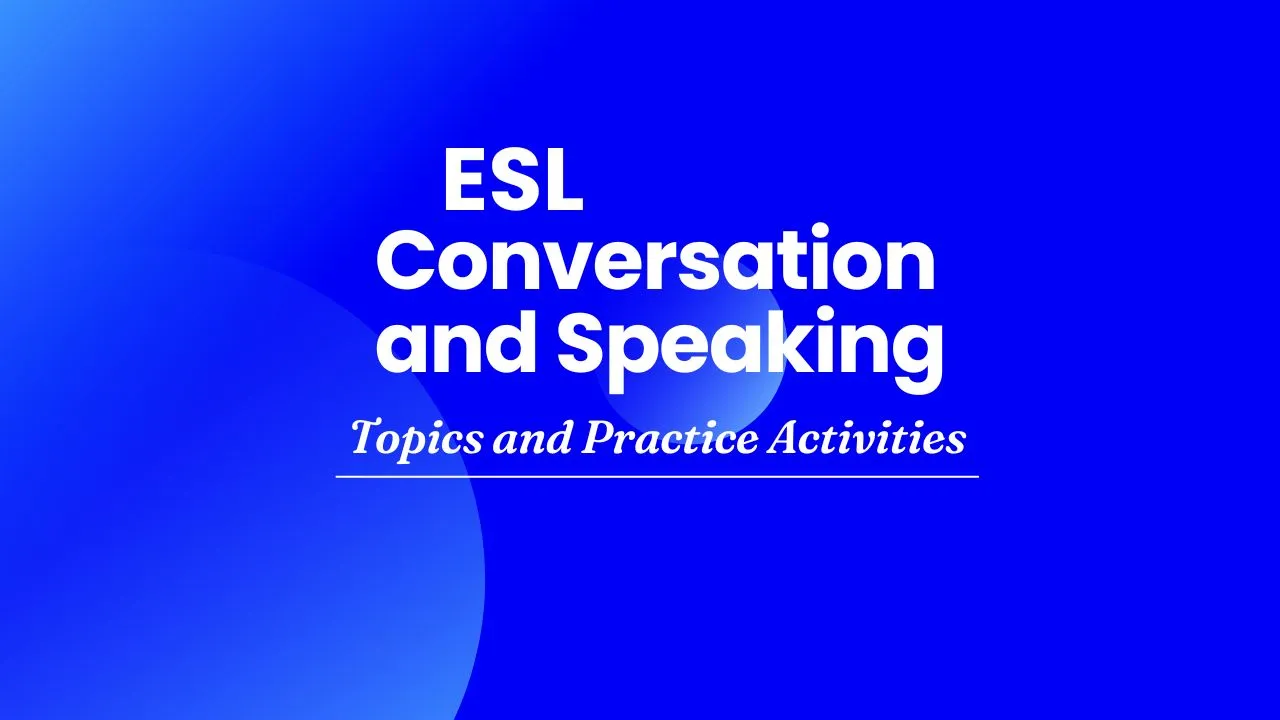Learning English as a second language can be challenging, especially for adults navigating the complexities of grammar. This article will explore the significance of ESL grammar lessons for adults and provide a comprehensive guide on topics and exercises tailored to enhance their language proficiency.
Why ESL Grammar Lessons for Adults Matters
Mastering grammar is essential for effective communication. For ESL Grammar Lessons for Adults, grappling with grammar rules might seem daunting, but it’s a crucial step toward fluency. Clear communication, whether in business or personal interactions, hinges on a solid understanding of grammar.
Tailoring ESL Grammar Lessons for Adults
Adults approach learning differently than children. ESL Grammar Lessons for Adults need to be crafted with adult learners in mind, acknowledging their life experiences and catering to their unique needs. Real-life scenarios can be integrated into lessons, making grammar more relatable and applicable. Let’s take a look at the lessons:
- Parts of Speech
- Nouns
- Pronouns and Its Types
- Kinds of Nouns
- Noun: Gender
- Nouns: Number
- Noun: Case
- Adjective
- Comparison Adjectives
- Pronouns and Its Types
- Verbs and Its Types
- Adverbs
- Prepositions
- Tenses
- Active Passive Voice
- Direct and Indirect Speech
- Clause and Its Types
- Joining of Sentences
- Transformation of Sentences
- Interchange of Parts of Speech
- Do as Directed
- Phrasal Verbs/ Basic Idioms
- Subject Verb Agreement
- Common Errors and Corrections
People also ask
| Conversation and Speaking |
| ESL Speaking Questions for Beginners |
| ESL Conversation Topics for Beginners |
| ESL Conversation Topics for Intermediate Students |
| 26 Engaging ESL Conversation Topics for Adults 2024 |
| Daily English Writing Practice |
| 19 Exercises Tips to Improve English Writing Skills |
| 13 Writing Exercises for Beginners in English 2024 |
Engaging Topics for ESL Grammar Lessons for Adults
Explore the following ESL Grammar Lessons for Adults that will make the learning experience more enjoyable and practical. This will integrate real-world topics that resonate with adult learners’ interests and daily lives and can promote active participation and foster a more effective grasp of grammar concepts.
1. Parts of Speech
Parts of speech are the English words that are used in sentences with different functions and uses.
These parts of Speech are the different kinds of words that are used in a sentence according to their function. Words used in sentences are divided into Eight Categories.
1. Noun (Naming word): Tiger is a fierce animal.
2. Pronoun (words used in place of Nouns): I am your best friend
3. Adjective (words describing noun or Pronoun): Many men are poor.
4. Verb (Action word or doing word): We won the match.
5. Adverb (Words modifying Verb, Adjective, Adverb): He is quite strong.
6. Preposition (Relating words): He came of a rich family.
7. Conjunction (Connecting word): He is poor but honest
8. Interjection (Words expressing emotions): Alas! He is no more.
2. Nouns
A word used for naming anything is called Nouns. such as “ship”, “fox”, house”, or “man”. Hence a noun is a naming word. – J.C Nesfield.
A noun is a word used as the name of a person, place, or thing; as
Kolkata is on the Hoogly.
The rose smells sweet.
Akbar was a great king.
The sun shines bright.
– Wren & Martin
A noun is a word used to name or identify any of a class of things, people, places, or ideas, or a particular one of these. – OALD, A.S. Hornby
A Noun is a word that indicates the name of a person, animal, place, thing, or quality. The use of Nouns in English is very important as almost every sentence contains nouns used either as the subject or the object of a sentence.
Examples:
Person: Shakespeare, Vidyasagar, Swami Vibwkakanada, R. N. Tagore, Einestine. etc
Animals: Lion, deer, tiger, Fox, Elephant, etc.
Places: Newyork, London, India, Kolkata, Mumbai, etc
Things: Book, table, tree, Glass, Pen, etc
Quality: Kindness, honesty, Knowledge, Childhood, Beauty, etc.
3. Pronouns and Its Types
Pronouns in English Grammar are perhaps the second part of speech in the English Language. Pronouns in English Grammar:
A pronoun is a word used instead of a noun or noun equivalent.
- Ranit likes to play.
- He likes to play football.
Here the pronoun he is used instead of the noun Ranit and saves it from being mentioned twice. Hence a pronoun is a substitute word and its chief use is to save the repetition of a noun.
4. Kinds of Nouns
Nouns are mainly categorized into the following –
A proper noun is the name of one particular person, place, thing, event, or group of persons or places as distinct from every other.
Example :
The Indian Ocean, Australia, The River Nile, Egypt, India, Jupiter, Hyderabad, The Himalayas, Aladdin, Tom and Jerry, Holi, Wednesday, May, The Victoria Memorial, The Nilgiri Hills, Mount Everest, The Arabian Sea, The river Bhagirathi, etc.
A common noun denotes no one person or thing in particular but is common to any and every person or thing of the same kind or class. Here Common means are shared by all.
Boy, Girl, Man, Woman, Friend
A collective noun is the name of a group or collection of persons or things taken together and spoken of as one complete whole.
Crowd, army, fleet, jury, Atlas, dynasty
A Material Noun denotes the matter or substance of which things are made. It is also called Mass Noun.
Thus, “river” is a common noun but “water” of which it is made is a Material Noun. “Sheep” common noun but “mutton” (the flesh of a sheep) is a Material Noun.
An Abstract noun is usually the name of a quality, action, or state considered apart from the object to which it belongs.
Goodness, kindness, darkness, hardness, brightness
5. Noun: Gender
Gender in English Grammar roughly corresponds to the two sexes and sexlessness. Gender comes from the Latin genus, kind or sort.
There are 4( four) types of Gender in English Grammar for Nouns and Pronouns. They are
(a) Masculine
(b) Feminine
(c) Common
(d) Neuter.
| Masculine | Feminine | Common | Neuter |
| Boy | Girl | Student | Book |
| Lord | Lady | Parent | Pen |
| Dog | Bitch | Friend | Bag |
| Gander | Goose | Baby | Stick |
| God | goddess | Pupil | table |
| Heir | heiress | Orphan | River |
| Host | hostess | Sheep | City |
| King | Queen | Cattle | Tree |
| Lord | lady | Servant | desk |
6. Nouns: Number
Singular and Plural Number Rules refer to the numbers of Nouns, Pronouns, and Adjectives in English Grammar. “One” denotes a Singular Number and “more than one” refers to Plural numbers. When we change Nouns and Pronouns from Singular Numbers to Plural Number, their form changes.
Example 1:
One boy is playing football.
Many boys are playing football.
Example 2:
One horse is running.
Many horses are running.
“One” denotes a Singular Number. So, ‘One boy‘ and ‘One horse‘ refer to Singular Numbers.
“Many” refers to “more than one” i.e. Plural Number. Both “Boy” and “Horse” are Common Nouns in Example 1 and Example 2. So, ‘Many boys ‘ and ‘Many horses‘ refer to Plural Numbers.
7. Pronoun: Case(Possessive Pronoun)
The pronouns that show possession or that something belongs to someone are called Possessive Pronouns. As, mine, thine, hers, ours, theirs, and yours.
(1) This book is mine.
(2) That house is theirs.
(3) My horse and yours are both tired.
(4) This pen is hers.
8. Adjective
Adjectives are the spice of language, enriching our communication with vivid descriptions.
Adjectives are words that add something to the meaning of a noun or pronoun.
Examples:
1. He is a good boy.
2. This is a dark room.
3. Give a little milk.
4. Many men were present.
An Adjective also modifies a pronoun. – A B C of English Usage (Oxford)
Examples:
1. He seems angry.
2. Ah, miserable!
9. Comparison Adjectives
Learn about positive, comparative, and superlative forms, as well as the proper use of comparative and superlative adjectives and adverbs in sentences.
Get a thorough understanding of when to use “more,” “most,” “er,” and “est” to form comparisons. and how to construct meaningful and accurate comparative and superlative sentences.
Degrees of Comparison are the comparisons between two or more persons or things according to their Quantity, and Number or Quality. Those are also called the Degrees of Comparison of Adjectives.
There are three degrees in English.
For example
Positive: Two persons or things are said to be equal in respect of some quality.
Comparative: When two persons or things are said to be unequal in respect of some quality.
Superlative: The superlative degree is used when the comparison is intended between more than two things or persons.
10. Transitive and Intransitive Verbs
Transitive and Intransitive Verbs can be identified whether the verbs have Objects or not. If the verb has an Object, it is generally considered a Transitive Verb. If the Verb does not have an Object, it is generally considered an Intransitive Verb.
“A verb is Transitive if the action does not stop with the agent but passes from the agent to something else.” – J.C Nesfield.
Transitive Verbs are those verbs that require an object to make the sense clear.
(1) He eats rice.
(2) They play football.
(a) In the above two sentences, eats, and play, are called verbs as they are doing words.
(b) In sentence (1) ‘eats’ and in sentence (2) ‘play’ require an object to make sense clear. So, they are called Transitive Verbs.
11. English Conjugation of Verbs
English Conjugation of verbs refers to the systematic arrangement of the forms of a verb to indicate the various grammatical features of tense, mood, aspect, person, number, and voice in English.
12. Adverbs
Adverbs are words that tell us more about verbs, adjectives, and other adverbs.
Example:
She walks fast.
Shelly sat quietly. (qualifying the verbs walk and sat)
Sania is very hungry.
Aslam is rather naughty. (qualifying the adjectives hungry and naughty)
This week has passed incredibly slowly.
Esha cleans her desk quite often. (qualifying the adverbs slowly and often)
- Adverb of Manner
- Adverb of place
- Adverb of time
- Adverb of frequency
- Adverb of degree
13. Prepositions
These words tell us where someone or something is in relation to something else.
A preposition is a word that shows the position of things and people in relation to someone, something or some place.
There are different kinds of prepositions.
- Prepositions of place.
- Prepositions of time.
- Prepositions of movement
14. Tenses
Tense is the change of form in a Verb to express the time of an action. Verb and Tense are interrelated because it is the Verb of which Tense is determined. For Example,
- They are playing football.
- They were playing football.
- They will be playing football.
In each of the above sentences, the main verb is, “Play”. But the action of the Verb is being completed at a different time. So, when and in which time the action of a Verb was completed or is completed or will be completed, depends on Time. From here, we get the concept of Tense in English Grammar. Let’s consider the examples in the following.
15. Active Passive Voice
Voice is the form of the verb that shows whether the subject (person or thing) of the sentence is active (does something) or passive (something is done to him or her or it) at the action.
Examples:
(1) The teacher rebuked me.
(2) I was rebuked by the teacher.
The form of the verb of the first sentence shows that the subject (the teacher) is active i.e. he/ she does something (rebuked).
When the subject is the doer of an action, it is the active subject. And the form of the verb is in Active Voice.
The form of the verb in the second sentence shows that the subject (I) is passive i.e. something is done to him/her (was rebuked).
When the subject inactively receives an action (was rebuked), it is in the passive voice. And the verb form is in Passive voice.
16. Direct and Indirect Speech
Narration in English grammar refers to the style or way of expressing a story or speech. It includes direct speech and indirect speech conveying spoken words or thoughts within a narrative context.
When someone quotes the Narrator’s actual words, it is called Direct Narration or Direct Speech. When the Narrator’s actual words are spoken indirectly by someone keeping the meaning the same without quotation, it is called Indirect Narration or Indirect Speech.
- Direct Speech: Rehana says, “I shall dance.”
- Indirect Speech: Rehana says that she will dance.
The learning of Narration Class 10 will be completed to grasp the change of narration from direct to indirect speech or vice versa.
Narration change involves altering direct speech to indirect or vice versa.
Example:
Changing “She said, ‘I love this place‘” to indirect: “She said that she loved that place.“
Altering direct speech to indirect or vice versa, it is extremely important to know the Narration Change Rules.
So, explore the Narration Change Rules that have been discussed below with Examples and Exercises.
Rule 1
- Direct Speech: Ram says, “I am ill.”
- Indirect Speech: Ram says that he is ill.
Connective ‘that’ is added before the reported speech in Indirect Narration.
Rule 2
- Direct Speech: He said, “I write a letter.”
- Indirect Speech: He said that he wrote a letter.
If reporting Verb is in the past Tense, the reported speech verb is also changed into the past tense. If reporting Verb is in the Present Tense or Future tense, the tense of the reported speech verb will remain as it is.
17. Clause and Its Types
“A clause is a group of words that includes a subject and a verb forming a sentence or part of a sentence.
Example: He often visits Spain because he likes the climate.
”He often visits Spain” is a Main Clause and “because he likes the climate” is a subordinate clause.” – A.L.D.
(i) I know the boy who did it.
(ii) Tell me the place where he lives.
(iii) Tell me the time when he will come.
(iv) I know the reason why he said so.
(v) I know the way how he did it.
18. Joining of Sentences
Join the following sentences can be done with –
- (a) Participle, Infinitive, Adverbials, absolute phrase, a noun or a phrase in apposition, and preposition with a noun or a gerund, to make a Simple sentence. – for Simple Sentence.
- (b) Corelatives, such as, ‘Too … to’, ‘So … that, ‘No sooner… than’, ‘As soon as’, ‘Either… or’, ‘Neither nor, ‘Not only ….. but also’, ‘Both … and’, ‘else’, ‘self forms’, ‘nominal compound’, ‘As well as’, to make a compound sentence. – for Compound Sentences
- (c) a noun clause, An adjective clause, or an adverbial clause to make complex sentences. – for Complex Sentence.
- Single Sentence = Simple / Complex / Compound sentence.
19. Transformation of Sentences
Transformation of a Sentence involves altering the form, structure, or type of a sentence while maintaining its original meaning, a fundamental aspect of grammar. For instance, an interrogative sentence may be transformed into an assertive one without changing its meaning Follow the example:
Interrogative: Who does not know Rabindranath?
Assertive: Everybody knows Rabindranath,
In this case, it is a correct transformation of sentences examples from one form into another.
20. Interchange of Parts of Speech
Parts of Speech Interchange in English Grammar implies changing one part of speech to another in a sentence with the same meaning. Example of Interchange of Parts of Speech under the ‘do as directed‘ section covering the techniques of changing Nouns into Adjectives, Adjectives into Adverbs, Verbs into Nouns, and vice versa.
The Following examples are about the Interchange of Parts of Speech from Noun to Adjective.
Rewrite the sentences with the Adjective form of the underlined words.
(1) He showed generosity even to his enemies. (Noun)
Ans: He was generous even to his enemies. (Adj)
(2) There is a slight difference between the two pictures. (Noun)
Ans: The two pictures are slightly different. (Adj)
(3) He has sufficient intelligence to do the job. (Noun)
Ans: He is sufficiently intelligent to do the job. (Adj)
(4) I am fully sure of its necessity. (Noun)
Ans: I am fully sure that it is necessary. (Adj)
21. Interchange of Degrees of Comparison
The following rules and exceptions of the Interchange of Degrees of Comparison will enhance communication skills and make the writing style a perfect one
Degree change positive to comparative
Positive Degree
(i) No suffix ( such as -er, -est ) will be added to the adjective in the positive degree.
(ii) Basically, if there is “ as ….. as”, “ so ……. as”, or “ as …..” in the sentence, we use the positive degree which is the simplest form of the adjective.[ there is nothing like “than” or “ the ….. of ”]
Comparative Degree
(i) In Comparative Degree generally [ -er ] is added to the adjectives. As
taller = tall + er; sweeter = sweet + er; cleverer = clever + er, if the adjective is of one syllable [ mono-syllabic word].
(ii) If the adjective is of more than one syllable, [ more ] is added before the adjective in the Comparative Degree. As Iron is more useful than any other metal. [ Here ‘use – ful’ is a di-syllabic word]
Superlative Degree
(i) In Superlative Degree generally [ -est ] is added to the adjectives. As
tallest = tall + est; sweetest = sweet + est; laziest= lazy + est, if the adjective is of one syllable [ mono-syllabic word].
(ii) If the adjective is of more than one syllable, [ most ] is added before the adjective in the Superlative Degree. As Ram is the most intelligent boy in the class. [ Here in-te-lli-gent is a quadri-syllabic (4) word]
(iii) Basically, if there are “ the …….. of ”, “ the …….”, and “…….. of ” in a sentence, we use Superlative Degree.
Positive: He is as cunning as a fox.
Comparative: A fox is not more cunning than he.
22. Do as Directed: Grammar
Below are the topics with examples and answers for each of the types of English grammar given in the Do as Directed heading of the English Question paper of all classes.
Do as Directed
1. Do or die. [Turn it into a simple sentence]
Ans: In case of not doing it, you will die.
2. My friend has given me oranges. [Change the voice]
Ans: I have been given oranges by my friend.
3. You helped me. I should have been in trouble otherwise. [Join into a single sentence]
Ans: You helped me lest I should have been in trouble.
4. How he behaved shocked me. [Turn into a simple sentence]
Ans: His behaviour shocked me.
5. Sucheta said to me, ‘Let us go for a picnic’ [Change mode of narration]
Ans: Sucheta proposed that they should go for a picnic.
6. I was numb with shock. I got into the car. [ Join into a simple sentence]
Ans: Being numb with shock, I got into the car.
23. Subject Verb Agreement
Subject-verb agreement exercises are practice activities or exercises designed to help reinforce and test a person’s understanding of the rules governing the agreement between subjects and verbs in sentences.
Subject verb agreement refers to the grammatical rule that dictates the necessity for a subject and verb to be in agreement concerning their number and person.
When the subject is singular, the verb must also be singular, and when the subject is plural, the verb should be plural as well.
Hints 1: When two subjects of a sentence are joined by ‘Either … or’, ‘Neither … nor’, and ‘or’ ‘not only …. but also’, the verb agrees with the subject closest to it.
Hints 2: When ‘Each’, ‘Every’ or ‘No’ is placed before the subject (noun) joined by ‘and’, the pronoun and the verb should be Singular.
(a) Neither the cat nor the dogs (like) __________ water.
(b) Not only the flowers but also the vase (require) __________ careful handling.
(c) Each of the solutions (seem) __________ viable for different reasons.
(d) Not only the birds but also the squirrel (be) __________ in the tree.
(e) Either the dog or the cats (be) __________ in the garden.
Exercise 6:
(a) The news (be) __________ often sensationalized by the media.
(b) Both the mother and her children (enjoy) __________ the family vacation.
(c) The library (offer) __________ a wide range of books and magazines.
(d) The collection of rare coins (be) __________ displayed in the museum.
(e) Many of the staff members at the company (be) __________ going on vacation.
23. Phrasal Verbs/ Basic Idioms
Phrasal Verbs are the combinations of Verbs and adverbs or prepositions or both with completely new meanings and they consist of more than one word.
ost phrasal verbs consist of two words; the first word is a simple monosyllabic Verb, and the second word is a particle i.e., a preposition or an adverb. For example,
- Put (simple monosyllabic Verb) + on (preposition) = Put on
It is nowadays called Phrasal because it represents the appearance of a two-word phrase rather than a single item. There are also some three-word phrasal verbs i.e.,
- to put up with,
- to look down upon, and
- to leave up to.
24. Common Error and Correction
1. Incorrect: The cost the bananas were very high.
1. Correct: The cost of bananas was very high.
2. Incorrect: Honour and glory are his rewards.
2. Correct: Honour and glory is his reward.
3. Incorrect: Justice as well as mercy allow it.
3. Correct: Justice as well as mercy allows it.
In wrapping up our exploration of ESL grammar lessons for adults, it’s crucial to understand that the journey is unique for each learner. By embracing engaging topics, practical exercises, and a positive mindset, adults can navigate the intricacies of ESL Grammar Lessons for Adults with confidence and proficiency.
FAQs ESL Grammar Lessons for Adults
How long does it take for an adult to become fluent in English through ESL grammar lessons?
Fluency varies, but consistent practice and dedication can lead to significant improvement within a year.
Are there specific grammar topics that adults find more challenging?
Common challenges include complex tenses, prepositions, and idiomatic expressions.
Can self-study with online resources replace formal ESL grammar lessons?
While self-study is valuable, a combination of formal lessons and independent practice yields the best results.
Are there age-specific strategies for teaching grammar to adults compared to children?
Yes, adults benefit from real-life applications and discussions that relate to their experiences.
How can adult ESL learners stay motivated during the learning journey?
Setting achievable goals, celebrating milestones, and finding joy in the learning process can help maintain motivation.







